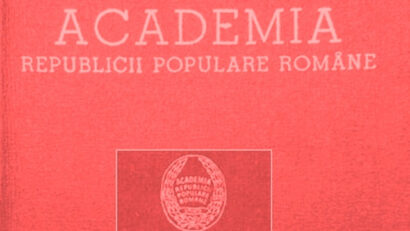Mental health legislation and reforms in the Romanian space
Mental illnesses have always been a source of pain for patients and their relatives

Steliu Lambru, 17.07.2023, 13:50
Mental illnesses have always been a source of pain for patients and their relatives, and in some situations even the cause of many tragedies, such as homicides committed by those who suffered from a mental illness. In time, societies and legislators have taken measures to prevent and punish such acts, codified according to the level of understanding of each and every historical time. In the Romanian space as well, cases of insanity, as they were generically called, were treated, and the crimes committed by those ill-fated people were punished. Codes of laws explicitly stated the measures that the justice representatives had to take to prevent the causes and remove the effects.
Throughout its history, jurisprudence has moved in the direction of decriminalizing offenders with a mental illness. In the Romanian Principalities, the first codes of laws in this sense were the ‘Romanian Book of Learning or ‘The Code of Vasile Lupu, in Moldavia in 1646 and ‘Making the law right with the help of God or ‘The Code of Matei Basarab, in Wallachia in 1652.
Psychiatrist Octavian Buda, professor of the history of medicine at the Carol Davila University of Medicine and Pharmacy in Bucharest, summed up their content from the point of view of humanizing the treatment of criminals with a mental illness. I cannot say that they are either constitutional laws or criminal codes, they are very similar to some codes that regulate various activities, including those of a legal nature. What I find remarkable is that these books theorize the fact that the presence of a mental illness means that a criminal can only be punished after an evaluation of those symptoms. And the sentences that refer to this aspect are the paragraphs that are called ‘glave translated as headings. One of these headings goes as follows: ‘when one is unaware of ones madness and out of ones mind, and consequently the father kills the son, one shall not be scolded because there is no bigger punishment than being mad and out of ones mind. It is a conceptualization of a medical aspect that is the subject of a medical safety measure.
The 18th century was a century of modern reforms in the West. The Romanian Principalities were under the Phanariot rule, and the wave of reforms also reached the principalities: There were Phanariot leaders that put together specific legislation. Alexandru Ipsilanti made a ‘Pravilnicească Condică – Code of Rules in 1780. At the beginning of the 19th century, Callimachi and Caragea had already issued their codes of 1817. The Phanariotes had a practice of bringing doctors from abroad to get involved in medical activities. Those were the dawns of Romanian modernity, with the first period 1800-1850 still being a period with challenges from the point of view of knowledge.
Modernization was advancing by leaps and bounds, and the Organic Law of the early 1830s continued what had been previously begun: The Organic Law did at least two things. First of all, it created an entity called the Doctors Commission, which later became the College of Physicians, and organized those aspects related to the standardization of medical practice. A kind of unrestricted practice license was created. In the sense that not any doctor was allowed to mess around, to come with a couple of tins and bones and produce a holistic treatment. There were expatriate doctors of Italian and Greek origin who had also traveled a lot during the Phanariot era. And the main idea was for this ‘imported elite to be able to communicate at least acceptably with a rural population that was rather reticent about these professional categories that they did not understand.
After laws and regulations, treatment facilities also appeared. One of the first such facilities or institutions was the Mărcuța mental institution.
Octavian Buda is back at the microphone with details: In 1838, during the time of Alexandru Ghica, something interesting from an institutional point of view happened. The Mărcuța facility appeared under the following circumstances: a part of the monastery came out of the church jurisdiction and became part of the then Home Affairs Ministry or the Interior Ministry. That’s where they started treating the psychiatric patients, in the modern sense that we still have today. The first doctor at Mărcuța institution was Dr. Minis, of Greek origin, who had studied in Leipzig. He was followed by Nicolae Gănescu who had studied in Kharkiv. He reorganized the psychiatric activity in the modern sense, as it was around the year 1850. He was concerned not so much with occupational therapy as with humane treatments because physical restraint methods such as tying were used at the time. He used woolen straps that did not hurt the patient. He also brought an electromagnetic device, but we don’t know what he did with it. Then followed the era of Alexandru Suțu, from the Phanariot family, who had studied in Athens and Paris. He took over the management of the Mărcuța hospital and remained at the helm of the institution for many years. He is the doctor who published in 1877 the book called ‘The Alienated before medicine and society, which is practically the first treatise on social and judicial psychiatry.
After Romania became an independent state in 1878, it developed appropriate health and legal policies. And psychiatry will be an expanding medical specialty. (LS)





























